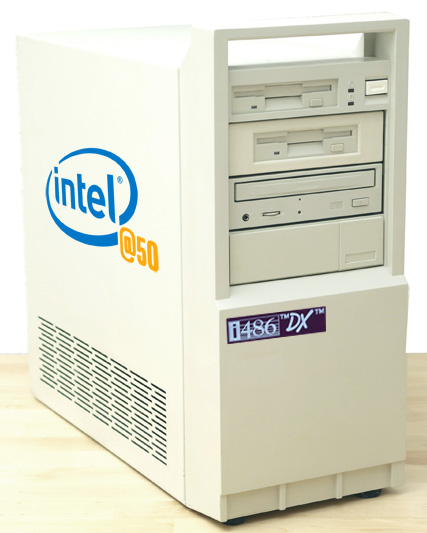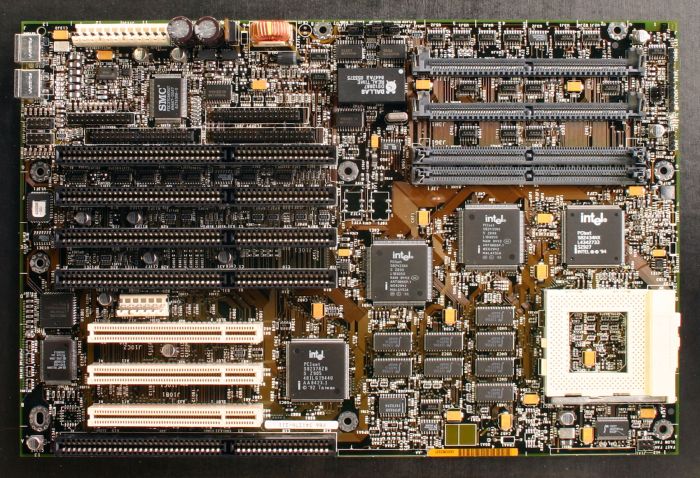By its 50th anniversary, Intel launches collectible computers based on its x86 processors, starting at 286
 In July 2018, Intel is 50 years old. Such a date only happens once in a lifetime, so they began to prepare for it in advance. And now we can talk about the main gift that the company has prepared for enthusiasts-amateurs. Very soon, collectible computers based on processors will be on sale, starting with the i286 and ending with the Intel Pentium, as well as the peripherals and software kits necessary for their work.
In July 2018, Intel is 50 years old. Such a date only happens once in a lifetime, so they began to prepare for it in advance. And now we can talk about the main gift that the company has prepared for enthusiasts-amateurs. Very soon, collectible computers based on processors will be on sale, starting with the i286 and ending with the Intel Pentium, as well as the peripherals and software kits necessary for their work.The idea of the main action of the project called “Intel at 50” (Intel @ 50) lay on the surface. Intel is engaged in a variety of hardware and software technologies, but if we talk about its mission - there can be no two opinions. Intel did not just go down in the history of processor design - it actually created it. But the implementation of the idea turned out to be far from simple - the preparation was delayed for 2 years and took place in an atmosphere of strict secrecy.
The post was published on April 1 - do not forget about it, please.
Such a long time it took the Intel team to overcome various technological problems. Let's start directly with the processor. Unfortunately, the production facilities that serve the current needs of the company, you can not recreate samples of 30 years ago - too different technological processes. The templates and matrices of old products, of course, have been preserved; there is also a complete set of documentation, but who will undertake to reanimate production from the past millennium? Fortunately, Chinese manufacturers still work with a variety of process technology - not always needed limit nanometers. Thus, it was possible not only to set up production, but also to reach the required level of quality, because the Intel logo will be on the processor, and this requires.

Newly played i486 processor
From the variety of processors of the 80s, for economic and technological reasons, four were chosen:
| CPU | Year of issue | Data bus | Technical process | Frequency |
|---|---|---|---|---|
| i80286 | 1982 | 16 bits | 1500 nm | 16 MHz |
| i80386DX | 1985 | 32 bits | 1000 nm | 40 MHz |
| i80486DX | 1989 | 32 bits | 800 nm | 50 MHz |
| Pentium i | 1993 | 32 bits | 800 nm | 66 MHz |

Project base motherboard
To facilitate the task, it was decided to use a single reference design of Intel motherboards for i486 computers with the necessary tuning for each generation. The engineers had to solve more than unusual tasks - it is unlikely that they will meet them again. It was necessary to ensure the functionality of vintage PCs using the most authentic components, using modern ones in the case when relatives are unavailable. This meant, in particular, that all the functionality had to be focused on the motherboard - an exception was made only for video cards, the design of which could be restored using Intel archive materials.
It was decided to abandon the production of some components for economic reasons or, if you like, from the point of view of common sense. Let's say, theoretically, you can restart the production of disk drives and 5.25 "floppy disks or CRT monitors, but will they be in demand at the price offered? Therefore, it was decided to limit the model of disk drives and the standard VGA connector for connecting a monitor of your choice.
When choosing a PC case, they also preferred the authenticity of external showiness. The well-known IBM PC with a rigorous traditional design (you can see it on the KDPV) was used as a template. On the side wall put the logo of the project, and on the front - a sticker, strictly repeating the inscription on the corresponding processor. The ODD / FDD set was chosen depending on the generation: for example, for the 486, this is an optical CD-R and two 3.5 "drives.
The following options for Intel @ 50 computers will be available:
| Model | Equipment | Price |
|---|---|---|
| i @ 50-286 | 16 MHz processor, 1 MB RAM, 16 MB HDD, FDD 3.5 ”, FDD 5.25” cap, keyboard, MS-DOS | $ 799 |
| i @ 50-386dx | 40 MHz processor, 4 MB RAM, 16 MB HDD, 2xFDD 3.5 ”, keyboard, mouse, MS-DOS | $ 799 |
| i @ 50-486dx | 50 MHz processor, 8 MB RAM, 32 MB HDD, 2xFDD 3.5 ”, CD-ROM, keyboard, mouse, Windows 3.1 | $ 899 |
| i @ 50-586 | 66 MHz processor, 16 MB RAM, 64 MB HDD, 2xFDD 3.5 ”, CD-ROM, keyboard, mouse, Windows 95 | $ 999 |
